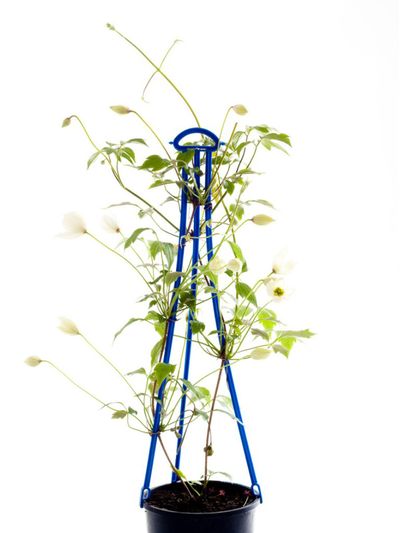Can You Grow Clematis in Containers?
Growing Clematis in pots is slightly more involved, as potted Clematis plants require more attention than in-ground plants. However, Clematis container growing is definitely possible, even in climates with chilly winters.
Clematis for Containers
Many varieties of Clematis are suitable for growing in containers, including the following:
“Nelly Moser,” which produces purplish pink blooms “Polish Spirit,” with violet-blue flowers “The President,” which displays blooms in a rich shade of red “Sieboldii,” a dwarf variety with creamy white flowers and purple centers
Clematis Container Growing
Clematis performs best in large pots, especially if you live in a climate with chilly winters; the extra potting soil in a larger pot provides protection for the roots. Nearly any pot with a drainage hole is fine, but a ceramic or clay pot is likely to crack in freezing weather. Fill the container with a good quality, lightweight potting soil, then mix in a general-purpose, slow-release fertilizer according to manufacturer recommendations. As soon as the Clematis is planted, install a trellis or other support for the vine to climb. Don’t wait until the plant is established because you may damage the roots.
Caring for Potted Clematis Plants
Clematis planted in a container requires regular irrigation because potting soil dries quickly. Check the plant every day, especially during hot, dry weather. Soak the potting mix whenever the top 1 or 2 inches (2.5-5 cm.) feels dry. Fertilizer provides the nutrients Clematis needs to bloom throughout the season. Feed the plant with a general purpose, slow-release fertilizer every spring, then repeat once or twice through the growing season. If you prefer, you can feed the plant every other week, using a water-soluble fertilizer mixed according to label directions. Healthy Clematis plants usually don’t require protection during the winter, although some varieties are more cold hardy than others. If you live in a cold, northern climate, a layer of mulch or compost will help protect the roots. You can also provide extra protection by moving the pot into a sheltered corner or near a protected wall.
